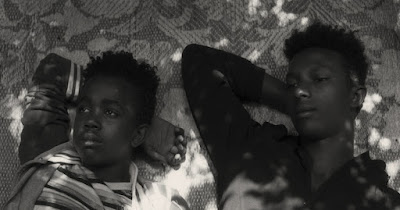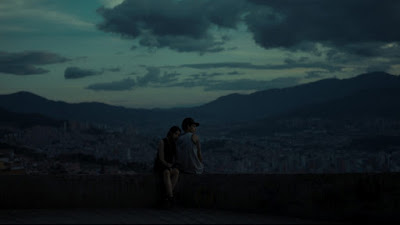
For a change, I was there at the start. Before I even knew Dibakar Banerjee’s name, I had heard about his first feature film. In 2006, I was co-programming a Spotlight on India for my film festival. My plan was to program 5 films, one from each corner of the country and then the 5th film was to be set in New Delhi. However, back then it was difficult to find a contemporary Indian film set in New Delhi. The new wave of independent films set in Delhi were a few years away and so were the multiple Bollywood films set exclusively in New Delhi. Through a film critic friend, I was put in touch with a distributor who mentioned an upcoming Indian comedy called Khosla Ka Ghosla (Khosla’s Nest) set in Delhi staring Boman Irani, Anupam Kher. The presence of these 2 stellar actors in a non-Bollywood film was enough to convince me. Of course, back then I didn’t know that film would be the first step in the journey of a director who would turn out to be one of Indian Cinema’s most creative directors and whose rise coincided with the emergence of a new wave of story and character driven Independent films, a world away from the melodramatic song-dance Bollywood films.
After Khosla Ka Ghosla, I treated every new Dibakar Banerjee film as an event. I saw all his films as soon as possible. Yet, somehow I missed his most recent film in 2021. Sandeep Aur Pinky Faraar was meant to be released in 2020 but it was delayed like many other films due to the pandemic. The film was eventually released in 2021 but I didn’t hear about it and I even missed the streaming debut near the end of 2021. But, I have finally seen it. This feels like an appropriate time to look back and collect my thoughts on all of Dibakar’s 6 feature films to date.
Note: this does not cover the three short story anthologies he worked on (Bombay Talkies, Lust Stories, Ghost Stories).
Khosla Ka Ghosla! (Khosla’s Nest, 2006)

A perfect movie that truly captures the essence of a Punjabi family living in New Delhi while depicting land/housing issues that plague middle-class Indians in a realistically manner not seen in any previous Indian film. Part of what makes this film so realistic is how it accurately depicts the mannerisms, habits, conversations of everyday Punjabis in Delhi. The complete cast is excellent with Anupam Kher, Ranvir Shorey, Navin Nischol and Boman Irani giving vintage performances. Full credit to Dibakar Banerjee, Jaideep Sahni (who wrote this gem) and the entire cast/crew for bringing this wonder of a film to life.
Oye Lucky! Lucky Oye! (2008)

Dikabar’s second feature Oye Lucky! Lucky Oye! carries on from the first film in terms of authentically depicting Delhi’s lifestyle. The film mentions that it is inspired by real life events and that feels believable given the scale of robberies depicted in the film.
Oye Lucky!.. is the story of Lucky, a small time crook played by Abhay Deol, who robs for fun and not money. Eventually, Lucky gets addicted to stealing. When he is bored or can’t fall asleep, he goes on a robbing binge, stealing everything from cars, jewelry, a pet dog or even a stuffed toy. Lucky does not use a gun but simply his confident attitude. In one outrageous example, he walks into a man’s house in broad daylight past the security guard, gets the car key from the house, greets the home owner’s grandmother and orders the security guard to help him keep a tv in the car and drives off, stealing both the car and tv.
The secret to Lucky’s success is his ability to either charm people or emit such confidence that no one can think of him as a robber. Portraying such a confident character is not an easy task but Abhay Deol pulls it off brilliantly and is flawless in his dialogue delivery and body language.
Like his previous film, Dibakar again does justice to little Delhiite details, such as the way instant coffee is made. Only in Delhi homes have I seen coffee made by repeatedly stirring some ground coffee with sugar and a bit of milk until the entire mixture is a whipped up syrupy mixture. The characters in Oye Lucky!.. speak and behave in perfect Delhiite manners, although the film does focus mostly on the Punjabi characters. Plus shooting the film in local Delhi spots adds to the film’s realistic feel.
LSD: Love, Sex Aur Dhokha (Love Sex and Betrayal, 2010)

Three words in the title equate to three interlinked stories about honour killing, a sex tape scandal and a sting operation. Like his previous films, Dibakar takes real life events and fashions them into a story rarely seen in Indian cinema.
The first story related to 'Love' is clearly poking fun at Shah Rukh Khan type romantic Bollywood films but things take a turn into darker territory when the girl’s family does not approve of her relationship with a boy. The middle story around sex features CCTV footage and a store manager’s plan to make fast money by making a sex tape of him with one of his co-workers. 'Betrayal' equates in the third story about a sting operation gone wrong.
The stories are nicely linked and the film’s tone ranges from satire to over the top scenarios and self-referential winks at popular media and Bollywood itself. In this regard, the film is a change from Dibakar’s previous two features.
On another note, LSD is the feature film debut of Rajkummar Rao and one of Nushrat Bharucha’s earlier films.
Shanghai (2012)

Shanghai is a brilliant adaptation of Vassilis Vassilikosis’ Z, a vital novel made into an award winning by Costa-Gavras (1969). The original material is thoroughly immersed in Greek society and politics but seeing Banerjee’s film treatment, it feels like the story is purely Indian. This is due to the similarities that exist between Greece and India in terms of the material: corrupt politicians, an angry mob waiting to always pour their hatred out at whoever they are told to, poverty turning ordinary people into criminals. In addition, the three-wheeler at the center of the Greek story exists in India although in Banerjee’s film, a truck replaces the three-wheeler (often known as an ‘auto’ in Northern India).
Some of the inspired casting enhances the film. Abhay Deol, the brazen robber in Oye Lucky! Lucky Oye!, plays a rare honest Indian government official in the film. Emraan Hashmi, who made his name in Bollywood films for kissing his female co-stars, is shown to be completely unkissable in this film. Farooq Shaikh, who rose to fame by playing multiple honest everyday characters in 1980s cinema, plays a corrupt politician hiding in an honest man’s clothing. The rest of the cast is packed with arresting performances delivered with relish by prominent Indian actors/actresses: Prasenjit Chatterjee, Supriya Pathak, Tillotama Shome, Kalki Koechlin, Pitobash.
Note: By this stage, other film festivals and the larger film community had discovered Dibakar. Shanghai played at TIFF.
Detective Byomkesh Bakshy! (2015)

Based on Saradindu Bandopadhyay’s character, Detective Byomkesh Bakshy! is a pulp noir delight. Set in November 1942 Calcutta, the intriguing plot features a shifting political WWII landscape. The British are still in India but talk of independence is firmly in the air. Of course, part of that independence involves various groups jostling for power with their own interests in mind. Therefore, the story features a plot involving an underground Indian revolutionary group, a possible Japanese invasion, a Chinese opium trade gang, a femme fatale, spies and a detective on the case of a missing person. All these different threads are smartly tied together and presented in a dark mystery. Near the end, the darkness gives way to horror with some blood gushing violence that is a far cry from other films of Dibakar Banerjee.
The late Sushant Singh Rajput is lovely as the titular character with his perceptive observations rendered with an innocence that cuts against the worldly ruthlessness of Neeraj Kabi’s character (Dr. Guha). Even though the story features multiple characters, the film ends up being a chess match between Byomkesh and his foe, akin to Sherlock vs Moriarty.
Sandeep Aur Pinky Faraar (Sandeep and Pinky have fled, 2021)

Banerjee’s newest film is a wicked delight that balances its dark comedic sequences with some moments of genuine darkness. A police officer, Pinky (Arjun Kapoor), has to drive Sandy (Parineeti Chopra) to a location but both are in the dark about their destination. Pinky is a suspended police officer looking to get back in the force and will do anything to get his job back. As a way to get his job back, Pinky’s boss asks him to pick and drop off Sandy. Pinky doesn’t ask any further questions and goes about his job. However, Pinky is jolted awake when he witnesses police officers assassinate what they mistakenly think is Pinky’s car. Now, realizing that both his and Sandy’s lives are in danger, Pinky and Sandy go on the run. The brazen police assassination makes Pinky question who Sandy is and why someone wants her dead. Initially, Pinky and the audience are led to believe that the reason for Sandy’s killing is related to an office affair gone wrong but as the film progresses, we learn that instead the reason for silencing Sandy is due to a multi-million dollar money fraud scheme.
Events unfold in a realistic manner expected of a Dibakar Banerjee film. The two characters’ behaviour and their actions while on the run are entirely believable given their personalities and backgrounds. The film contains some worthy flourishes including an ending sequence which is not what one would have expected given the film’s start. A dark sequence shown in the film is quite stunning in showcasing the transformation of the characters behaviour and body language. In the scene, an otherwise harmless bank employee discovers Sandy’s real identity. Believing he now has the upper hand, he attempts to sexually assault Sandy. In just one sequence, the film shows the fear that women have to live with in India and in many parts of the world.
Finally, the film’s flipping of the two character’s names adds to the film’s humour: Pinky is traditionally a nickname for a girl while Sandeep is more commonly a male name.
Rough Ranking of Dibakar’s films:
1. Khosla Ka Ghosla
2. Oye Lucky! Lucky Oye!
3. Shanghai
4. Sandeep Aur Pinky Faraar
5. Detective Byomkesh Bakshy!
6. LSD: Love, Sex Aur Dhokha
































